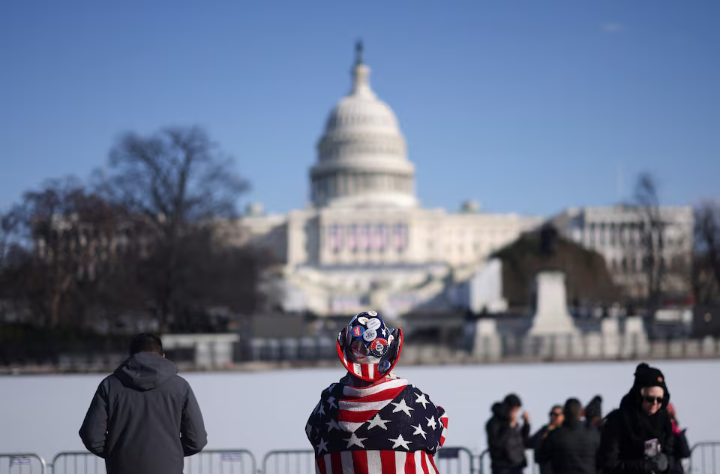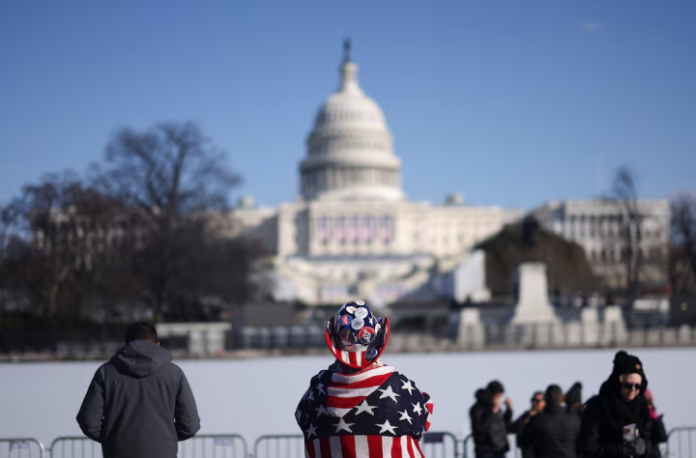For the first time in four decades, a U.S. presidential inauguration will take place indoors due to dangerously cold weather. President-elect Donald Trump announced that his swearing-in ceremony on Monday will be held inside the U.S. Capitol, a decision last made in 1985 when Ronald Reagan’s second inauguration faced bitter cold temperatures.
Trump Cites Safety Concerns Amid Arctic Blast
Trump took to Truth Social to explain the unprecedented move, citing severe weather conditions as the primary reason.
“There is an Arctic blast sweeping the country. I don’t want to see people hurt or injured in any way,” he wrote. “Therefore, I have ordered the Inauguration Address, in addition to prayers and other speeches, to be delivered in the United States Capitol Rotunda.”
Weather forecasts predict that Washington, D.C., will experience temperatures around 19°F (-7°C) on Monday, with wind chills making it feel even colder. The extreme cold conditions have forced organizers to make significant changes, including moving Trump’s planned presidential parade indoors.
A Historic Shift in Inaugural Traditions
Trump’s inaugural committee has arranged for supporters to watch the ceremony on large screens inside the Capital One Arena, a sports venue that can accommodate about 20,000 people. The president-elect has also announced that the traditional parade, which typically moves down Pennsylvania Avenue to the White House, will now take place inside the same arena. However, details on how the parade will be executed in an indoor setting remain unclear.
This move significantly reduces the number of people who can witness the event in person. Over 220,000 ticketed guests were expected to watch from the Capitol grounds, while another 250,000 people were projected to stand on the National Mall. Now, only a fraction of those attendees will be able to experience the inauguration live.
No Crowd-Size Controversy This Time?

One unintended consequence of the indoor switch is the elimination of direct crowd-size comparisons—a point of contention during Trump’s first inauguration in 2017. Back then, media reports suggested his turnout was far smaller than Barack Obama’s record-breaking 2009 inauguration. Trump was infuriated by the comparisons, leading to heated debates over attendance figures.
Some Trump supporters have already expressed disappointment over the changes. Tammy Matte, a school secretary from Mississippi, had planned to travel nearly 1,000 miles with her family to witness the inauguration. Upon learning that they would not see the ceremony in person, they canceled their trip.
“We don’t feel it’s worth it if we won’t see the ceremony in person,” said Matte.
Security Adjustments and Historical Precedents
With the change in venue, the U.S. Secret Service is working closely with Trump’s inaugural team and congressional security officials to adjust security plans. Alexi Worley, a spokesperson for the security agencies, confirmed that additional measures were being taken to adapt to the new circumstances.
Cold weather has historically played a role in many past inaugurations. The coldest on record was in 1873, when Ulysses S. Grant’s second swearing-in took place at just 4°F (-15°C), causing some cadets and midshipmen to collapse. Similarly, William Henry Harrison delivered the longest inaugural speech in 1841, in freezing rain and without a coat—leading to pneumonia and his death just a month later.
As Trump prepares for his second term, this unexpected twist in the inaugural ceremony adds to the unique nature of his presidency. The question now is: Will this scaled-down event mark a quieter beginning, or is it just the calm before another political storm?



